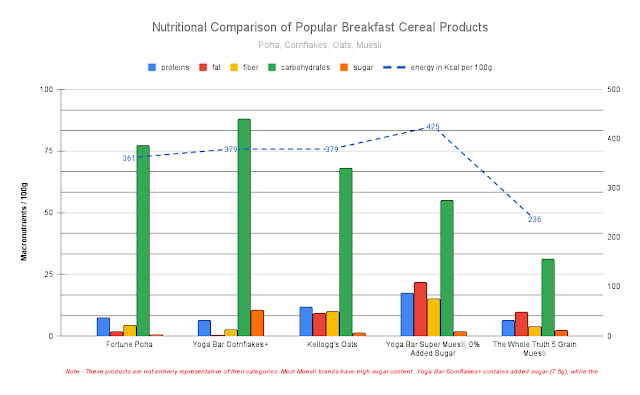Exploring High-Protein Packaged Foods: A Nutritional Analysis 💪📊
As per the Recommended Dietary Allowance (RDA) given by Indian Council of Medical Research (ICMR) for Indians, 0.8 to 1 gm protein per kg body weight per day is needed to meet the basic nutritional requirements.
An effective way to do so would be to ensure that at every meal 1/4th of the plate is filled with protein.
To explore packaged protein-rich food options, I analyzed 197 products (with known nutrition facts as of September 26, 2024) that have a protein value of over 25g per 100 grams in the India database on Open Food Facts - the 'Wikipedia of food.'
The data, sourced from Open Food Facts and subsequently cleaned, is available on GitHub in CSV format and can be viewed through Excel or any other spreadsheet.
You can also explore the curated dataset using the online Flat Viewer tool if you're looking for options to increase your protein intake. Any one column can be pinned to make data in the table easier to analyze while scrolling. Data in all columns can be sorted as well.
The following chart provides a nutritional overview of various packaged high-protein foods from each category. This will help you compare different options and make informed choices based on your individual needs and preferences.
The chart has been created using data from Open Food Facts and validated with nutrition labels on Amazon for these branded food products:
- NAKPRO Platinum Whey Protein Isolate
- Dr. Vaidya's Plant Protein Chocolate
- Saffola Soya Chunks
- MuscleBlaze Peanut Butter with Whey Protein Concentrate
- Herbalife Formula 1 Nutritional Shake Mix
- Sagar Skimmed Milk Powder
- The Whole Truth - Peanut Cocoa Protein Bar
- Threptin Diskettes
- Nutty Gritties Seed Mix
- Organic Tattva, Organic Peanuts
While the specific brands cater to the Indian market, the product categories—like whey, plant-based, and soy protein—are relevant worldwide.
Considerations for Choosing High-Protein Food:
* Source of Protein: The type of protein (e.g., whey, soy, plant-based) can influence the quality and digestibility of the protein.
* Added Sugars: Some products may contain added sugars, which can impact their overall nutritional value.
* Price: Consider the cost per serving when comparing different products.
The 2024 revision of ICMR-NIN's Dietary Guidelines for Indians advises obtaining high-quality proteins and essential amino acids (EAA) through a balanced combination of foods rather than relying on protein supplements. It discourages the use of supplements solely for muscle mass development, promoting natural food sources to meet protein requirements.
Protein Tidbits:
* Quinoa: A complete protein, containing all 9 essential amino acids.
* Chickpeas: The oldest cultivated legume, dating back 10,000 years.
* Tofu: Originated in China over 2,000 years ago.
* Spirulina: Contains 16g of protein per tablespoon.
Fuel your fitness with the right balance & combination of protein, fat, and carbs!
Also see -



Comments
Post a Comment